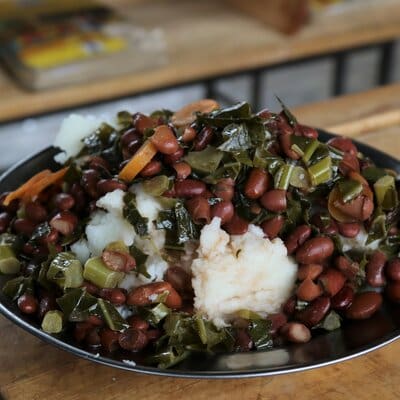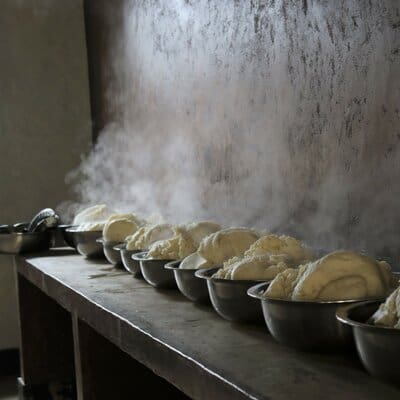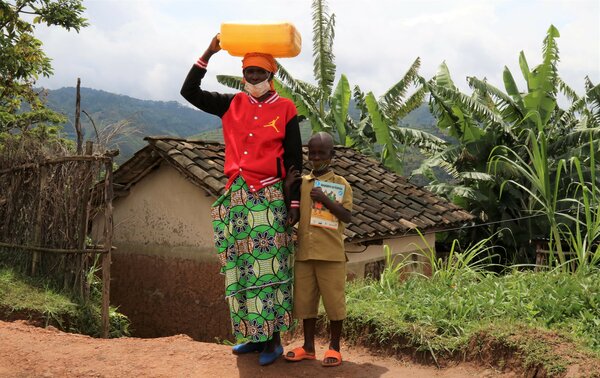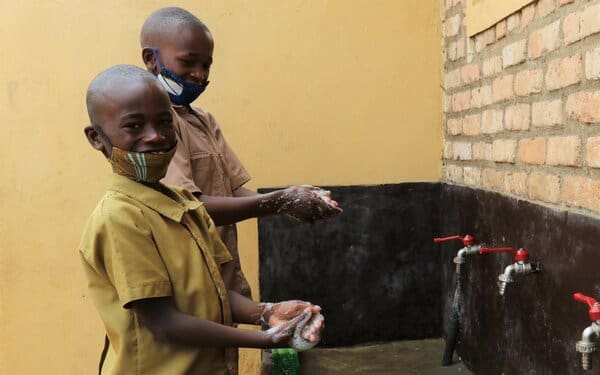Garden to Plate: How School Feeding Empowers Children in Rwanda

By supporting schools, the United Nations World Food Programme (WFP) boosts both health and literacy in rural areas.
Education is everything for Francine, a mother of three from Ruhinga village in southern Rwanda. Despite the area still having a staggering 48 percent rate of stunting (impaired growth and development that children experience from poor nutrition), residents have witnessed improvements over time. This gives them hope that their children will have a brighter future.

Francine’s children impress her with their knowledge of English and their reading skills.
“When I was little, the school was quite far away so we could not always go, but now my children’s school is just around the corner,” said Francine. This makes it easier for families like hers to prioritize education.
Her two youngest sons, 9-year-old Donat and 13-year-old Lambert, are served by the U.N. World Food Programme’s home-grown school feeding program (HGSF), which provides schoolchildren with a daily nutritious meal.

Donat enjoys a U.N. World Food Programme-supplied school meal with classmates.
The U.N. World Food Programme also provides the schools with reading materials, guidance on good nutrition and help to establish kitchen gardens; all geared to improving the students’ health and education.
“My parents are both farmers and spend most of the day working in the fields,” said Lambert. Recalling life before the program five years ago, he added: “When I was little and before there were school meals, I would come home from school for my midday break feeling hungry but there wasn’t anything for me to eat. This left me low on energy and I didn’t feel like going back to school in the afternoon.”
“Now that I have lunch at school, it is easy for me to finish the whole day as I am not concentrating on my hunger. The school meals are also delicious.”
The school has its own garden where ingredients for the school kitchen are grow so children can also learn how to grow vegetables. Seedlings are provided to families of the surrounding community to encourage them to diversify the crops they grow. Lambert has helped his family establish a flourishing garden at home.
“We learn a lot about the importance of having a variety of colors in our meal to be healthy,” said Lambert.
But it’s not just about ensuring there is adequate healthy food. The U.N. World Food Programme has connected the school to a water supply which benefits not only the students but the wider community too. Permanent hand-washing facilities are now available so the community and families no longer have to walk long distances to gather water.
“We used to travel deep into the valley to get water – carrying it back up the mountain. My children used to have to help me with this task. Often, they would be late for school due to the distance but now there is no need to do that,” said Francine. “This has greatly improved our quality of life and my children can focus more on their studies.”
Reading materials have been produced from stories developed from the surrounding communities to help further improve the children’s literacy skills.
“I am so proud of my reading skills and I like to read stories to my mum,” said Donat. “I know I need to study hard because when I grow up, I want to be a teacher or a doctor.”
“Early results from the program show that it is having the desired outcomes,” said Amy Blauman, the U.N. World Food Programme’s education adviser. “Student attendance has increased to 92 percent and student reading comprehension increased from 49 to 78 percent.”
The U.N. World Food Programme’s HGSF program supports the Government of Rwanda in providing daily nutritious school meals and complementary activities to 79,000 primary schools students in 108 schools in four of the most vulnerable and hungry districts across the country. The program is possible thanks to the generous support from the United States Department of Agriculture (USDA) and Mastercard.
The U.N. World Food Programme’s school meals programs are just one of the ways we’re fighting back against childhood hunger. Send a meal to a hungry child today.








